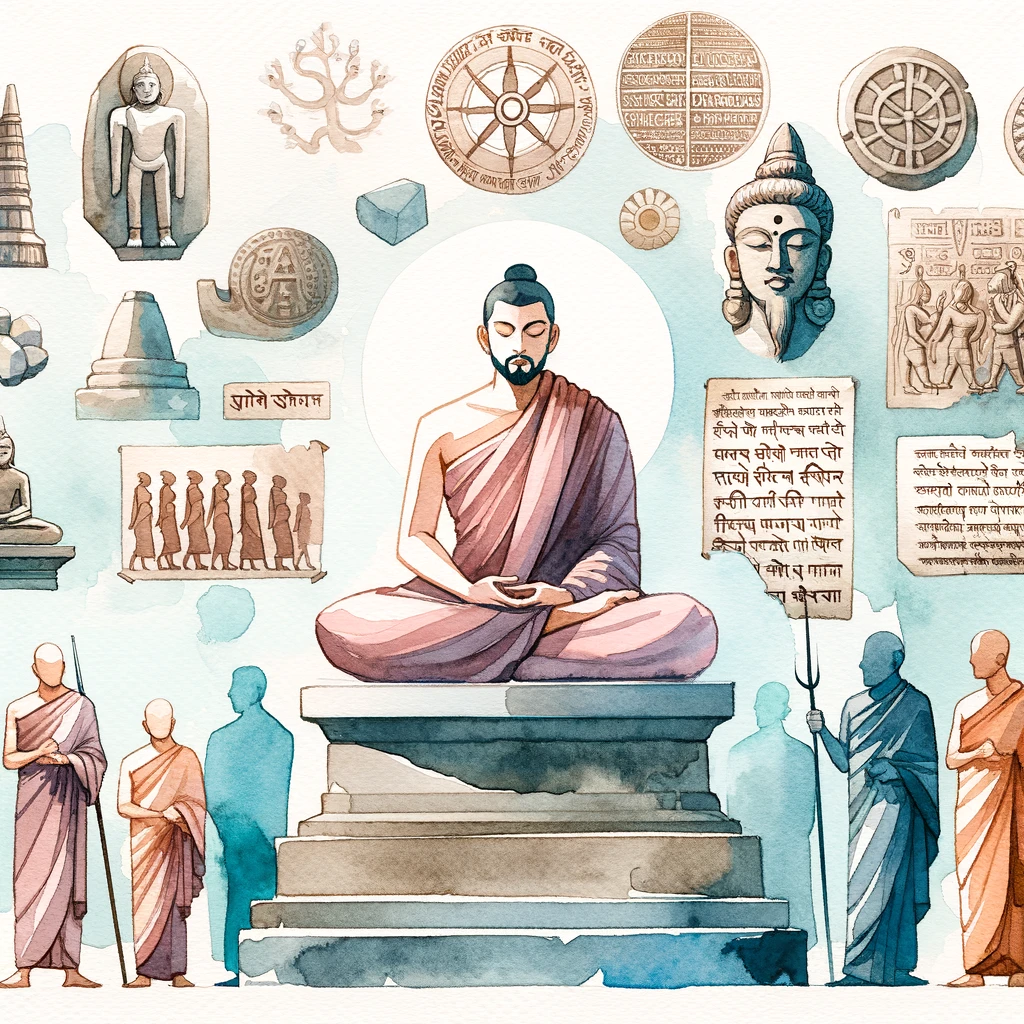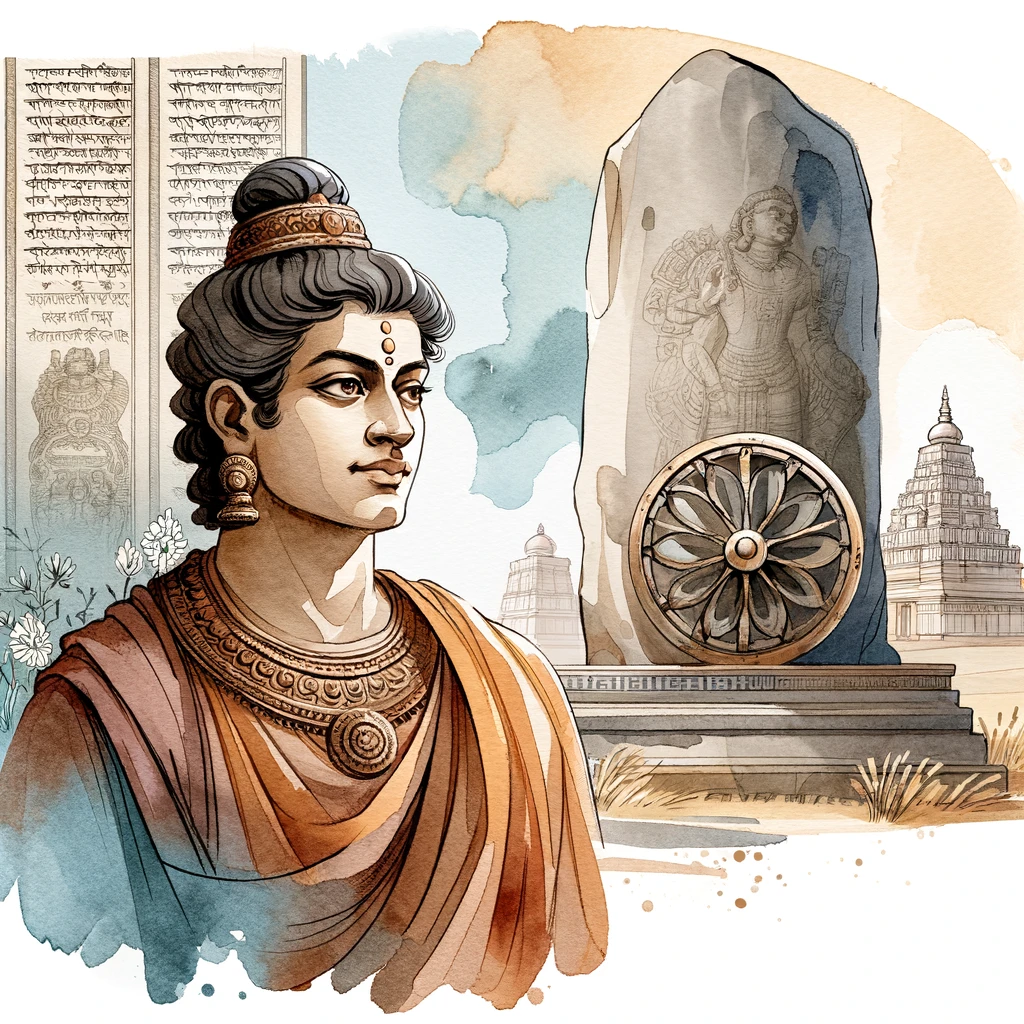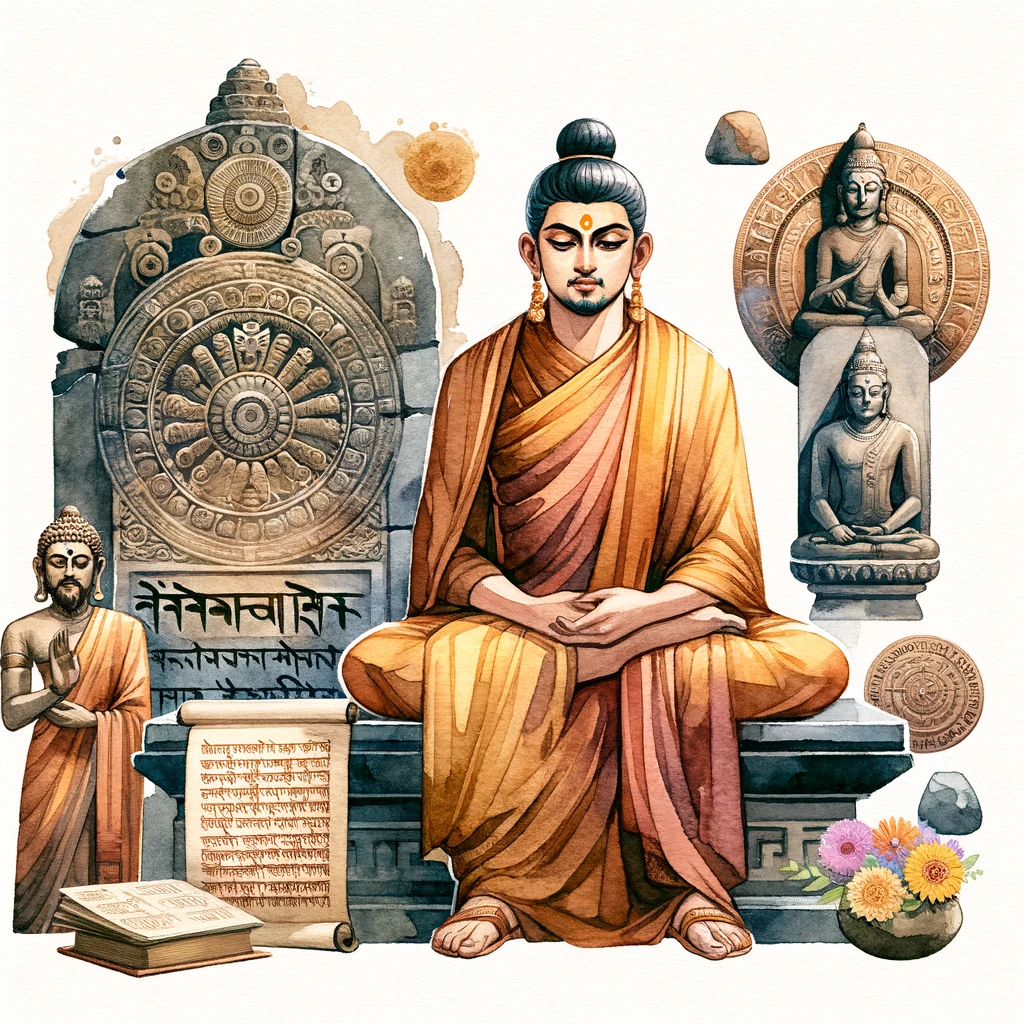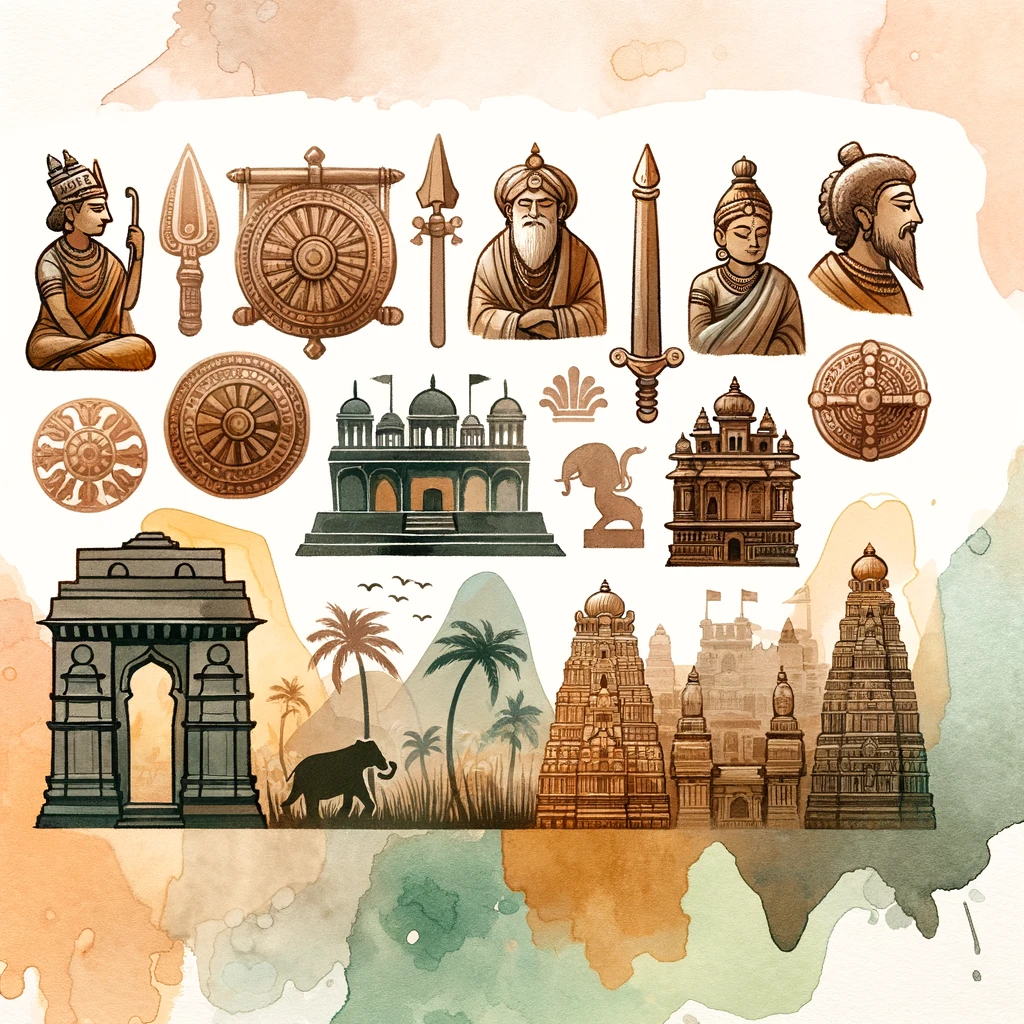Ashoka the Great, the third ruler of the Mauryan Empire, is one of the most celebrated figures in Indian history. His reign, which lasted from approximately 268 BCE to 232 BCE, is noted for the spread of Buddhism, the implementation of a unique administrative system, and the promotion of welfare policies under his concept of Dhamma (Dharma). His administration significantly shaped the socio-economic landscape of the Mauryan Empire.

Ashoka’s Dhamma
Philosophy and Principles
- Ashoka’s Dhamma was a set of ethical and moral guidelines aimed at promoting social harmony, tolerance, and non-violence. It was influenced by Buddhist teachings and sought to create a just and compassionate society.
- Key principles of Dhamma included respect for all living beings, generosity, truthfulness, non-violence (Ahimsa), and compassion towards the poor and elderly.
Propagation of Dhamma
- Ashoka undertook extensive efforts to spread Dhamma throughout his empire and beyond. He sent emissaries, including his own children, to various regions to propagate Buddhist teachings and principles.
- He also encouraged the construction of stupas (Buddhist shrines), viharas (monasteries), and pillars inscribed with edicts that articulated his Dhamma.

Inscriptions
Edicts of Ashoka
- Ashoka’s edicts, inscribed on rocks, pillars, and caves, are a primary source of information about his reign and policies. These inscriptions are found across the Indian subcontinent, from Afghanistan in the northwest to Andhra Pradesh in the south.
- The edicts are written in various languages, including Prakrit, Greek, and Aramaic, reflecting the diverse cultural landscape of the Mauryan Empire.
Content of the Edicts
- The inscriptions cover a wide range of topics, including Ashoka’s efforts to spread Dhamma, his administration, public welfare measures, and instructions to officials.
- They emphasize moral and ethical behavior, the importance of welfare activities, and the need for religious tolerance and harmony.
Administration of Mauryan Empire
Emperor as the Supreme Authority
- Ashoka, like his predecessors, was the supreme ruler with absolute power. He was responsible for making laws, implementing policies, and maintaining order throughout the empire.
- Council of ministers and high-ranking officials aided the emperor and assisted in governance and administration.
Provinces and Districts
- The Mauryan Empire was divided into several provinces, each governed by a viceroy or governor appointed by the emperor. These provinces were further divided into districts (Janapadas) for more effective local administration.
- Key provinces included Magadha (the heartland of the empire), Takshashila (northwest), and Ujjain (west).
Officials of Mauryan Empire
Mahamatras
- Mahamatras were high-ranking officials responsible for implementing Ashoka’s policies, including the propagation of Dhamma and welfare activities. They acted as the eyes and ears of the emperor, ensuring the smooth functioning of the administration.
- Some Mahamatras were specifically tasked with overseeing the welfare of different social groups, such as Dhamma Mahamatras. They focused on promoting ethical conduct and religious harmony.
District Administration of Mauryan Empire
- At the district level, officials called Rajukas were responsible for maintaining law and order, collecting taxes, and overseeing agricultural activities. They also served as judges in local disputes.
- The district administration ensured efficient governance and the implementation of the emperor’s policies at the grassroots level.
Economy, Society, and Trade

Economy
Agriculture:
- Agriculture was the backbone of the Mauryan economy. The state promoted irrigation projects, land reclamation, and improved agricultural techniques to enhance productivity.
- Land revenue, collected as a portion of the agricultural produce, was a major source of state income.
Taxation:
- The Mauryan administration implemented a well-organized taxation system. Taxes were levied on land, trade, crafts, and various economic activities.
- Fund public works, maintain the army, and support welfare programs with the collected revenue.
Society
Social Structure:
- The Mauryan society was diverse and included various social groups and communities. While the caste system existed, Ashoka’s policies aimed at promoting social harmony and reducing caste-based discrimination.
- Ashoka’s Dhamma emphasized respect for all individuals, irrespective of their social status, and encouraged moral and ethical behavior.
Welfare Measures:
- Ashoka implemented several welfare measures to improve the living conditions of his subjects. He established hospitals, rest houses, and public gardens.
- Ashoka’s inscriptions highlight his concern for the welfare of all beings, including animals. He banned animal sacrifices and promoted veterinary care.
Trade
Internal Trade:
- The Mauryan Empire had a thriving internal trade network, connecting various regions through well-maintained roads and trade routes. Pataliputra, the capital, was a major commercial hub.
- Markets in towns and cities facilitated the exchange of goods such as textiles, grains, spices, and metals.
Foreign Trade:
- The Mauryan Empire engaged in extensive trade with foreign regions, including Central Asia, the Hellenistic world, and Southeast Asia. Ports along the western and eastern coasts facilitated maritime trade.
- Major exports included textiles, ivory, precious stones, and spices, while imports included gold, silver, horses, and luxury goods.
Conclusion
Ashoka’s reign marked a transformative period in the Mauryan Empire, characterized by the propagation of Dhamma, efficient administration, and significant socio-economic developments. His inscriptions provide invaluable insights into his policies and governance. The emphasis on welfare and ethical conduct, coupled with a well-organized administrative structure, contributed to the stability and prosperity of the Mauryan Empire. For UPSC aspirants, understanding Ashoka’s administration and its impact on ancient Indian society is crucial for appreciating the legacy of one of India’s greatest rulers.

